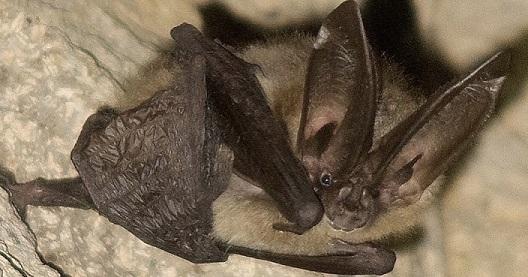Update: Bureau of Land Management Oregon/Washington goes batty
Organization:
BLM Office:
Media Contact:
Portland, Ore. — Your local Oregon bats won the annual Bureau of Land Management Bat Beauty Contest for the second year in a row!
William ShakespEAR, a Townsend’s big-eared bat from Butte Falls, took home the crown on the afternoon of October 31, 2023. During the final round, she beat out Gizmo, an Allen's Big-Eared Bat.
William was photographed by Emma Busk, BLM wildlife technician, while Gizmo was photographed by Dillon Metcalfe from Bat Conservation International.
Each October, the BLM hosts a beauty contest to find the most stunning bat photographed on BLM public lands across the county. The event begins on October 24 and ends on Halloween. It also coincides with International Bat Week to raise awareness about bat conservation and their essential role in the natural world.
Last year, the BLM named Barbara, a canyon bat from Lake County, the 2022 Bat Beauty Contest Winner. Barbara was photographed by Kate Yates, BLM wildlife biologist.
Busk photographed William last year while monitoring a Townsend's big-eared maternity colony.
“William is actually a female!" said Emma. “Townsend's big-eared bats form maternity colonies in the spring before they have their pups. Unlike other bats in Oregon, Townsend's big-eared bats have very specialized habitat requirements. They need open space where they can roost in caves. Not disturbing bats when they’re hibernating is really important and will help keep Townsend's big-eared bats healthy and thriving.”
Townsend’s big-eared bats can be found throughout Oregon and Washington and are very vulnerable to human disturbance. Their numbers are declining, causing the species to be named an Oregon Conservation Strategy Species.
In an effort to help, BLM wildlife biologists perform regular checks on Oregon caves to keep an eye on bat populations and monitor for symptoms of white-nose syndrome, which can kill hibernating bats.
“It’s important that we fact check what we think we know about bats,” said Busk. “There are a lot of myths around bats, but they’re amazing wildlife and they contribute so much to our ecosystem.”
Bats play an essential role in Oregon. All bats in the Pacific Northwest are insectivorous, meaning they rid our world of pests like mosquitos, beetles, and moths. Just one bat can eat up to 1,200 mosquitoes in an hour!
Want to do your part? As we head into winter, avoid exploring mines and caves where bats may be hibernating.
“In your own backyard, you can have a bat house!” said Emma. “It’s a shelter that helps protect bats during the winter. You can also make your garden more bat friendly by planting native flowers to attract insects and turning off any unnecessary lights. Light pollution is not great for bats."
Want to get involved next year? Follow the Bureau of Land Management Oregon/Washington on Facebook (@BLMOregonAndWashington) or Instagram (@BLMOregonWashington).
The BLM manages about 245 million acres of public land located primarily in 12 western states, including Alaska, on behalf of the American people. The BLM also administers 700 million acres of sub-surface mineral estate throughout the nation. Our mission is to sustain the health, diversity, and productivity of America’s public lands for the use and enjoyment of present and future generations.

